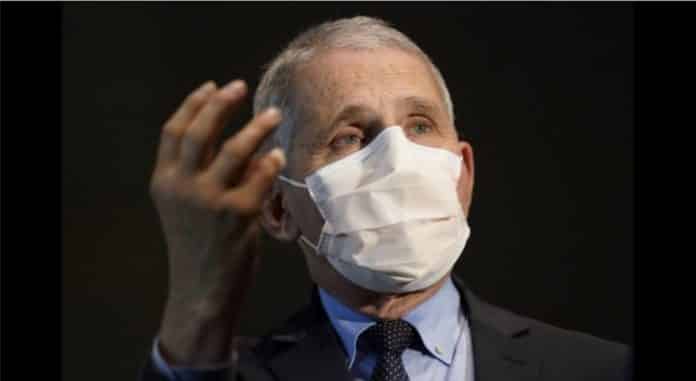Nov. 6 (UPI) — The coronavirus situation is still easing worldwide with a weekly 18% cases and 23% deaths drop, though Asia is experiencing a surge in infections, especially Japan and South Korea, amid two new Omicron subvariants.
Like the past week, cases are rising significant in only Japan and South Korea over seven days among nations with at least 25,000 infections.
The seven-day world moving average for cases was 295,062, the lowest since late September 2020, according to Worldometers.info. In one week infections declined to 2,065,438 with the cumulative 637,695,929 so far Sunday. Cases on Saturday were 225,753, the lowest number since 207,137 Sept. 7, 2020, with last Sunday at 244,956. The last time cases were above 1 million was July 31.
The seven-day moving average for deaths was down to 1,158, the fewest since 1,073 March 21, 2020, 10 days after the World Health Organization declared COVID-19 a pandemic, according to Worldometers.info. In one week deaths declined to 8,101 with the cumulative 6,605,464 so far Sunday.
Daily deaths worldwide dropped to 545 Sunday, the least since 424 March 14, 2020, with 1,050 last Sunday.
Some nations do not report data on weekends. The U.S. Centers for Disease Control and Prevention has gone to weekly updates.
The records were 3,847,809 cases on Jan. 21, during the height of the Omicron subvariant, and 16,890 deaths on Jan. 21, 2021, when the Delta subvariant was at its peak.
The World Health Organization has been concerned about Omicron sub-variants.
“Right now, we’re in a situation where we have more than 300 subvariants of Omicron that are in circulation and these subvariants are quite similar to each other,” Dr. Van Kerkhove, the WHO’s technical lead on COVID-19, said at a briefing last week. “It is confusing in terms of the subvariant names, we recognize that, but the names that are in use are the scientific names by the different groups who analyse these from a technical point of view.”
About 95% of the subvariants are of BA.5 and about 20% of those are BQ.1. And XBB, which is a recombinant of two BA.2 sublineages, accounts for about 1% of the sequences circulating worldwide.
He noted that “surveillance for SARS-CoV-2 has declined drastically around the world, which means testing has declined, sequencing has declined and without the ability to understand what is circulating, to share these viruses, to share the knowledge about these viruses, we’re not in a situation to assess them as rapidly and robustly as we would like.”
Amid the new variants, South Korean Prime Minister Han Duck-soo said Friday the number of daily infections could reach up to 200,000 cases, but less than one-third of the daily record. The government has recently expanded booster shots against Omicron variants to all people aged over 18.
Japan, South Korea and Australia reported increases in both deaths and cases in the past week.
Japan posted the most weekly cases, 375,907 in a 38% increase and was seventh in deaths at 387, a 6% gain.
South Korea’s 297,276 infections were second in the world, with a 27% rise, and deaths were 223, a 42% increase in 12th.
Germany, which posted the most weekly cases last week, dropped to third at 252,641 in a 37% decrease, five weeks after a 60% gain, and the second-most deaths at 1,062, with no change two weeks after a 88% gain. Germany is the second-most deaths at 991, with a 7% gain and 88% rise two weeks ago.
The only other cases’ increase among nations with at least 25,000: Australia 18% at No. 9 38,875.
Decreases in the past week in descending order were Taiwan 16% at No. 4 243,770, United States 31% at No. 5 189,609, France 32% at No. 6 153,609, Italy 47% at No. 7 110,988, Russia 20% at No. 8 42,362, Cjhile 15% at No. 10 35,423, Hong Kong 12% at No. 11 33,945, Austria 21% at No. 12 33,975, Indonesia 60% at No. 13 29,725, Brazil 26% at No. 14 26,916, Malaysia 57% at No. 15 26,616.
Among nations reporting more than 100 deaths with increases in the past week: Taiwan 5% at No. 5 455, Indonesia 52% at No. 11 236, Chile 17% at No. 14 137, Australia 24% at No. 15 119, India 109% at No. 16 115.
Other decreases were United States 32% at No. 1 1,548, Britain 27% at No. 3 737, Russia 14% at No. 4 497, France 20% at No. 6 404, Italy 40% at No. 8 335, Brazil 42% at No. 9 276, Philippines 3% at No. 10 245, Spain 35% at No. 12 138.
In the past week, Asia reported 50.5% of the world’s cases, one week after 36.9% and it rose 14% for a cumulative 194,676,035, according to Worldometers.info. The continent has 59% percent of the world’s population.
Also increasing: Africa 19% for 12,679,708.
Decreases were Europe 40% for a world-high 235,084,861, North America 34% for 118,096,293, South America 16% for 64,498,584, Oceania 15% for 12,659,727.
Three continents reported an increase in deaths: Asia 17% for 1,490,576, Oceania 3% for 21,707, Africa 1% for 257,935.
Decreasing were North America 38% for 1,555,478, Europe 29% for a world-high 1,946,407, South America 23% for 1,333,346.
The United States leads with 1,098,221 fatalities and 99,639,207 infections. The nation also holds the world record for daily cases at 906,816 on Jan. 7. Brazil is second in deaths at 688,419, including 35 Saturday and fifth in cases at 34,892,134, including 1,891 most recently.
India is second in cases at 44,660,579, including 1,122 Sunday and third in deaths at 530,500 including 14 Sunday with single deaths reported in April and zero the last time on March 24, 2020.
India has the daily deaths record at 4,529 on May 18, 2021, with no adjustments from regions.
In the top 10 for deaths, Russia is fourth with 390,588 including 62 Sunday, Mexico is fifth with 330,415 and no weekend data, Peru sixth with 217,069 including seven Saturday, Britain seventh with 194,704, Italy eighth with 179,436, Indonesia ninth with 158,829 including 22 Sunday and France 10th with 157,277.
In the top 10 for cases, France is third with 36,946,904 including 26,840 Saturday, Germany fourth with 35,823,771, South Korea sixth with 25,838,239 including 36,675 Sunday, Britain seventh with 23,930,041, Italy eighth with 23,642,011, Japan ninth with 22,273,251 including 66,397 Sunday, Russia 10th with 22,674,944 including 4,566 Sunday.
In Japan, cases have been surging as restrictions ease. Japan’s seven-day moving case average is 53,701 compared with 26,325 Oct. 12 and under 20,000 in early July with the daily record 255,316 Aug. 18.
Japan’s spike is occurring during colder weather.
Atsuo Hamada, a Tokyo Medical University specially appointed professor in infectious diseases, said people tend to ventilate indoor spaces less often in cold weather and there is crowding in public spaces.
“We want people to get vaccinated for the omicron variant and influenza early while taking basic measures to prevent infections,” he told The Mainichi. He also urged people to wear masks in crowded spaces.
And like in other nations, there is the one-two punch of coronavirus and influenza.
Throughout the pandemic Japan has had a low deaths rate.
Japan has 375 deaths per million, which is 145th in the nation, with the world at 847.4 and Peru No. 1 at 6,376. In cases, Japan’s rate is 180,574 per million in 890th place with the world 81,810 and Austria the highest among large countries at 598,934 with France 563,117, Portugal 545,139 and Denmark 537,465. Japan’s population is 125 million.
For the first time since the beginning of the pandemic, Japan resumed regular international sea route travel, a ferry service connecting Fukuoka in southwest Japan with South Korea’s Busan.
South Korea cases’ seven-day average is 42,468, compared with 20,355 on Oct. 14, the lowest since mid-July. In late June it was around 7,000. The daily record was 621,328 on March 17.
China, where COVID-19 emerged, has reported 5,226 deaths. Before a spike in April, it was 4,636, which stayed at that number since early February 2021. On Sunday, China reported 588 cases with 5,659 on April 29. Those are confirmed cases with illness. Asymptomatic ones are reported separately in Mainland China.
On Saturday, China reported 4,420 new locally transmitted infections on Saturday, the National Health Commission said, the most since May 6.
The situation could become “more severe and complex” as the country entered the winter flu season, said Hu Xiang, an official with China’s National Health Commission said Saturday.
In China’s zero-Covid policy, most international visitors are barred from entering China and cities can be locked down.
“Practice has proved that our pandemic prevention and control strategy . . . [is] completely correct, and such measures are proven the most economical and effective,” Hu said.
The annual Beijing marathon took place on Sunday morning under strict Covid protocols, after being canceled the previous two years.
In the central city of Zhengzhou, Apple’s largest iPhone assembly factory Foxconn went to a lockdown Wednesday of the area after an outbreak. The plant employs 200,000 the plant and account for 85% if the iPhone assembly.
Hong Kong, like China, has adopted a “zero tolerance” for coronavirus with strong restrictions eased, including hotel quarantine for arrivals from other nations.
Hong Kong reported 18 deaths and 5,111 cases Saturday with the record 79,876 on March 3.
“The worst is behind us,” Hong Kong leader John Lee said at Wednesday’s summit, attended by more than 200 investors from 20 countries.
But a mask mandate remains in effect indoors and outdoors. And international visitors must take tests for seven straight days after arrival in Hong Kong, and for the first three days barred from restaurants, bars and gyms.
The government lifted flight bans with certain countries and shortened hotel quarantine in March.
In the United States, the CDC has classified 2% of counties, districts and territories with a “high” category level, compared with 20.1% “medium” and 77.5% “low.” In “high” locations, masks are urged indoors with areas in scattefred places in the United Stated.
In its weekly update Thursday, the CDC reported 273,110 cases one week after 260,830, the lowest since 226,498 April 13. The record was 5,553,528 Jan. 19.
And the deaths average fell to 2,504, the lowest since 2,406 July 6 and the record 23,375 Jan. 13, 2021.
“We’re still in the middle of this — it is not over,” White House chief medical advisor Dr. Anthony Fauci said Thursday on the Conversations on Health Care radio show. “Four hundred deaths per day is not an acceptable level. We want to get it much lower than that.”
BQ.1 and BQ.1.1 represent 27% of infections combined and BA.5 has declined to 50%, according to the CDC.
And hospitals could face a “negative trifecta” this winter from emerging Covid variants, resurgent flu and respiratory syncytial virus, Fauci said.
“It’s going to be very confounding and might even stress the hospital system, particularly for the pediatric population,” Fauci said.
New weekly hospitalizations in the United States for one week were 3,272, which is a 1% weekly decline. A total of 5,469,077 have been hospitalized with COVID-19 since its inception with a population of 332 million. The U.S. total reported Sunday was 27,181, which is 3.87% capacity, and far below the record 160,113 (20.6%) on Jan. 20, according to the Department of Health and Human Services.
Also Thursday in its weekly report, the CDC said the U.S. adult one-shot vaccination rate was 91.2% with completed primary service at 78.3% and updated booster doses 9.9%. The full population rates are 80.2% for one shot, 68.5% for completed primary and 8.4% updated booster 5 and older.
The CDC recently switched from a breakdown of one and two boosters to one with the updated bivalent booster.
On Friday, Pfizer and BioNTech said immune responses against BA.4/BA.5 subvariants were “substantially higher” in people who got its new bivalent booster compared with people who received the companies’ original Covid-19 vaccine. The new one became available in September.
The booster has four times higher levels of neutralizing antibody against the Omicron BA.4/BA.5 variants in people older than 55 compared with the original vaccine.
Fauci also recommended testing before going to social gatherings, especially where vulnerable people are.
“That is a very good way of making sure you don’t spread infections, so utilization of tests, wearing masks where appropriate and getting vaccinated,” he said.






